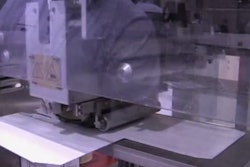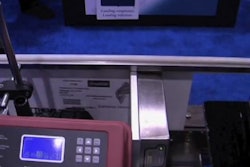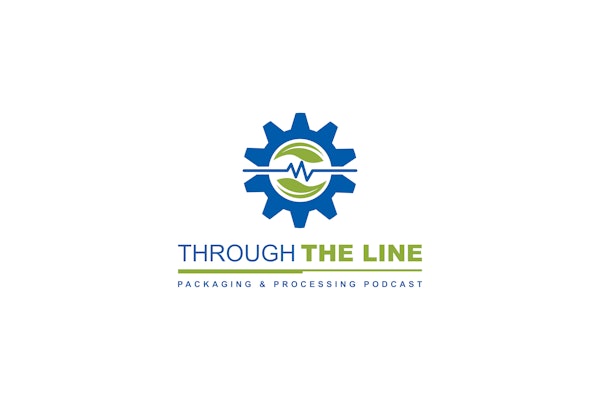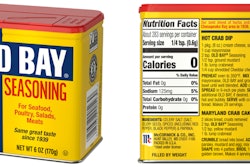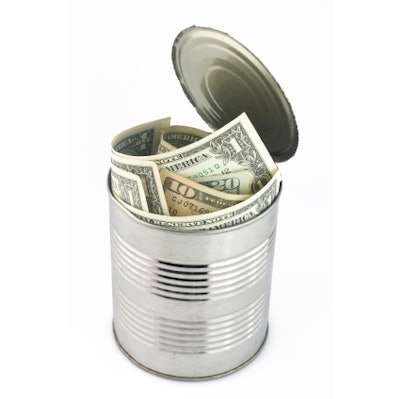
Packaging professionals know this maxim: Perception is reality.
Applied to the economy, the more relevant issue is not whether there’s
a recession, but whether consumers believe there’s a recession.
National polls indicate that they do; besides, the government’s
economic stimulus package is indicative in and of itself.
A consumer packaged goods company that’s determined to thrive rather
than just survive must assess opportunities inherent in a recession and
exploit them. Successful, the company will emerge stronger in market
share and brand strength. The person within the company who’s
responsible for packaging should accept the challenge of demonstrating
how the discipline is indispensable to those aims. A sluggish economy
favors the opposite in actions.
First, avoid the cutting knife
It’s part of senior management’s DNA to think belt-tightening during
downturns; therefore, the packaging manager must make the case for why
the discipline should be spared cuts in personnel and resources. The
best position is to be able to demonstrate that the company’s packaging
already is lean and efficient and that further cuts would be into
muscle. Short of that, it would behoove a packaging manager to present
his own proposed measures, rather than simply accept those imposed.
In all instances, the pitch should be quantifiable, but, luckily, any
well-run packaging department has had experience—especially recently—in
communicating with numbers. That "recent" reference is for the
quantifying of savings derived from sustainable packaging. Not that
green is the only—or even main—contribution packaging makes to a
company’s being in the black, for it has always had to provide function
at the least systems cost.
The packaging manager’s case should be like an in-house Packaging
Scorecard that addresses the company’s mission, objectives, and
strategies. Packaging is often referred to as the silent salesman, but
that’s not to say that the manager—in effect, the salesman for
packaging—should be at all silent, when the discipline stands
vulnerable to ill-advised cuts.
Defend projects
The packaging manager should aggressively advocate on behalf of
projects that, in his opinion, can’t be scrapped or even tabled without
impairing packaging's ability to contribute to brand strength and
corporate competitiveness.
Senior management is not necessarily conversant with trends in
packaging technology, machinery, materials, design, etc., nor the
variety of ways they can be combined and interpreted for innovative and
smart results. Hence, a senior manager might decide the fates of
projects based on capital outlay, for example, favoring those deemed
more affordable, when that subjective measure doesn’t provide the total
picture.
Success in defending projects is based on numbers, but numbers that
reflect the future. The characterization should be that of an
investment, with the dividends quantified to the extent possible.
The packaging manager should look for ways to increase the incentive of
the higher-ups. One possible opportunity afforded by depressed times
is the willingness of suppliers involved in a project to make price
concessions. They need not be major. Even a small concession sweetens
a project originally attractive enough to have been approved without
it.
Another possible win-win situation with suppliers involves a more
favorable calendar. Clients who retrench in recessionary times allow a
supplier to move clients of the opposite persuasion to the head of the
line. Then, those latter clients can defend the project, not just on
the basis that it's an investment, but additionally that it can be
finished earlier, hence an earlier start of dividends.
How does a packaging manager know whether the aforementioned
opportunities and others are available? He can’t know - at least not
the full range - without ferreting them out. The manager has to take a
proactive stance, initiate dialogue, and brainstorm possibilities. An
added benefit: mutually beneficial relationships forged during
difficult times tend to endure and only grow stronger.
Make the marketing alliance
Packaging won’t be the only discipline scrambling to hold its own;
however, due to its inter-disciplinary nature, it’s well positioned to
form strategic alliances, and the most important is with marketing. A
recession is an apt time to inform and remind the company that
packaging is a powerful marketing tool.
Maintaining (or increasing) marketing expenditures during a recession
is not the whole of it; rather, the greater challenge is making sure
that expenditures--of whatever levels--are best suited to opportunities
presented by the circumstances. As for the possible contributions of
packaging, it’s useful to frame them around its functions: protection,
communication, and convenience or utility, as some prefer.
The specific reliance on each function depends on the marketing
strategy, which then must reflect knowledge of how the target consumer
has been changed by recessionary times:
* What’s the best way to emphasize protection so that it fosters a
sense of security and motivates otherwise reluctant consumers to make
the purchase?
* What’s the best way to communicate that the product is economical, while preserving the dignity of proud consumers?
* Likewise, what’s the best way to provide convenience that bespeaks value, but not penny-pinching?
The answers lend themselves to as much variety as there is across the
categories of consumer packaged goods; still, certain possibilities are
widely applicable. Larger, economy-size packages translates to fewer
trips to the store, as do concentrated formulas in smaller packages.
Typical promotional packages, such as greater quantity/same price and
pack-ons, are nicely suited for recessionary duties, also.
The stratification of high-, middle-, and low-end product offerings,
typical in most consumer packaged goods categories, adds another layer
of complexity. A recession—contrary to what might seem intuitive—might
steer some consumers to the high end (or a private brand), in
substitute for pricier indulgences forsaken in other areas, for
example. A surer prediction is that some consumers of more modest
means will switch to the low end. Under either scenario, it’s likely
to be at the expense of the middle ground.
High- and low-end products occupy their niches as the result of
consistently targeted marketing, while the middle is the province of
"me-too" entries, undifferentiated neither by product features nor by
packaging. Nonetheless, during a recession, all three strata need
reliable models of consumer behavior to guide marketing strategies and
to interpret them through packaging.
Pump up promotion
Most consumer packaged goods are not supported by media advertising,
relying on the package to serve that function in-store. A recession
provides an added necessity for more effective coordination between
these two marketing tools, whether the company is an old hand at media
advertising or is venturing into it because it's become more affordable
due to media concessions.
A television commercial should show the package at junctures, and for
durations, that are purposeful; after all, one objective of the
commercial is to give the viewer the knowledge of what to look for on
the shelves. A radio ad should, if feasible, sign off with, “Look for
________in the _____ package in stores nationwide,” or something to
that effect. A print ad should feature a package mock-up whereon brand
name and product category are prominent, clean of secondary copy that
usually doesn’t photograph legibly, anyway. The same goes for Internet
ads.
Realize that change is constant
Recession and expansion: Both are types of change, differing in
direction. Adaptability is the key to handling change, regardless of
the times. Adaptability depends on flexibility and speed.
A recession, therefore, is a test of how flexible a company’s packaging
operations are. With what ease and efficiency can the company react?
How geared for quick changeover are the operations? How smoothly can
special requirements be handled in-house without risking over-capacity
or idleness later? In that same vein, how strategically are contract
packagers utilized?
Speed-to-market is a competitive requirement. One manifestation is the
parade of package design changes that some brand owners have launched.
The recession will underscore further the value of speed; there will be
instances of recessionary strategies undertaken too slowly to take
advantage of the associated opportunities. Slow-footed companies also
will be at a disadvantage during the recovery, lagging behind swifter
competitors.
With so much national attention focused on the troubled economy, the
packaging manager should turn an unblinking, analytical eye on how his
discipline is structured—a necessary step in assuring that it stays in
step with the times–or even better, ahead of the times.
To paraphrase: Tough times don’t last, but tough packaging managers do.
Before becoming a packaging consultant, Sterling Anthony worked for Fortune 500 food, healthcare, and automotive companies, and has taught packaging at the university level. He welcomes your comments by phone, 313/531-1875 or by e-mail, [email protected]. His Web site is www.pkgconsultant.com.



